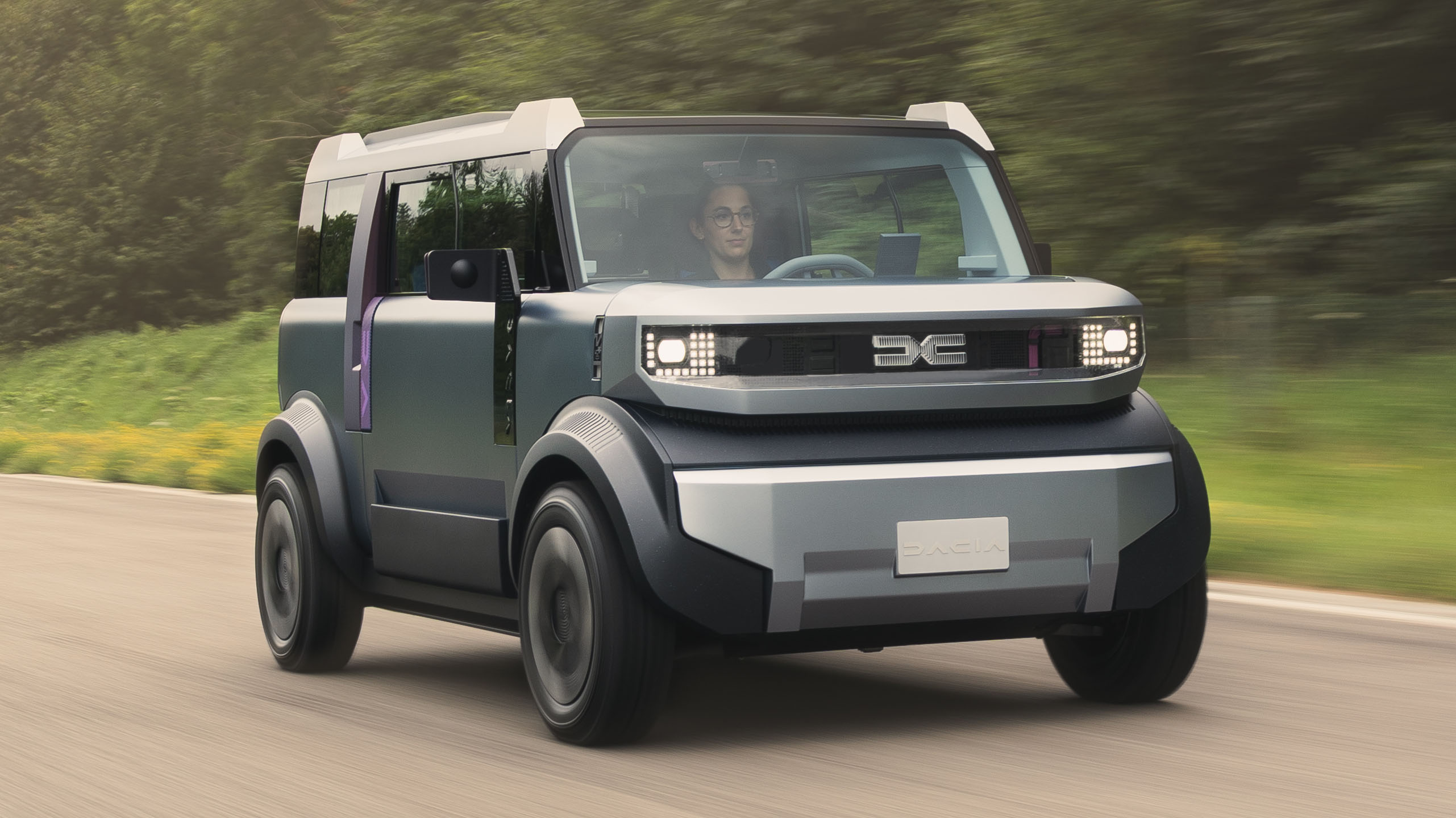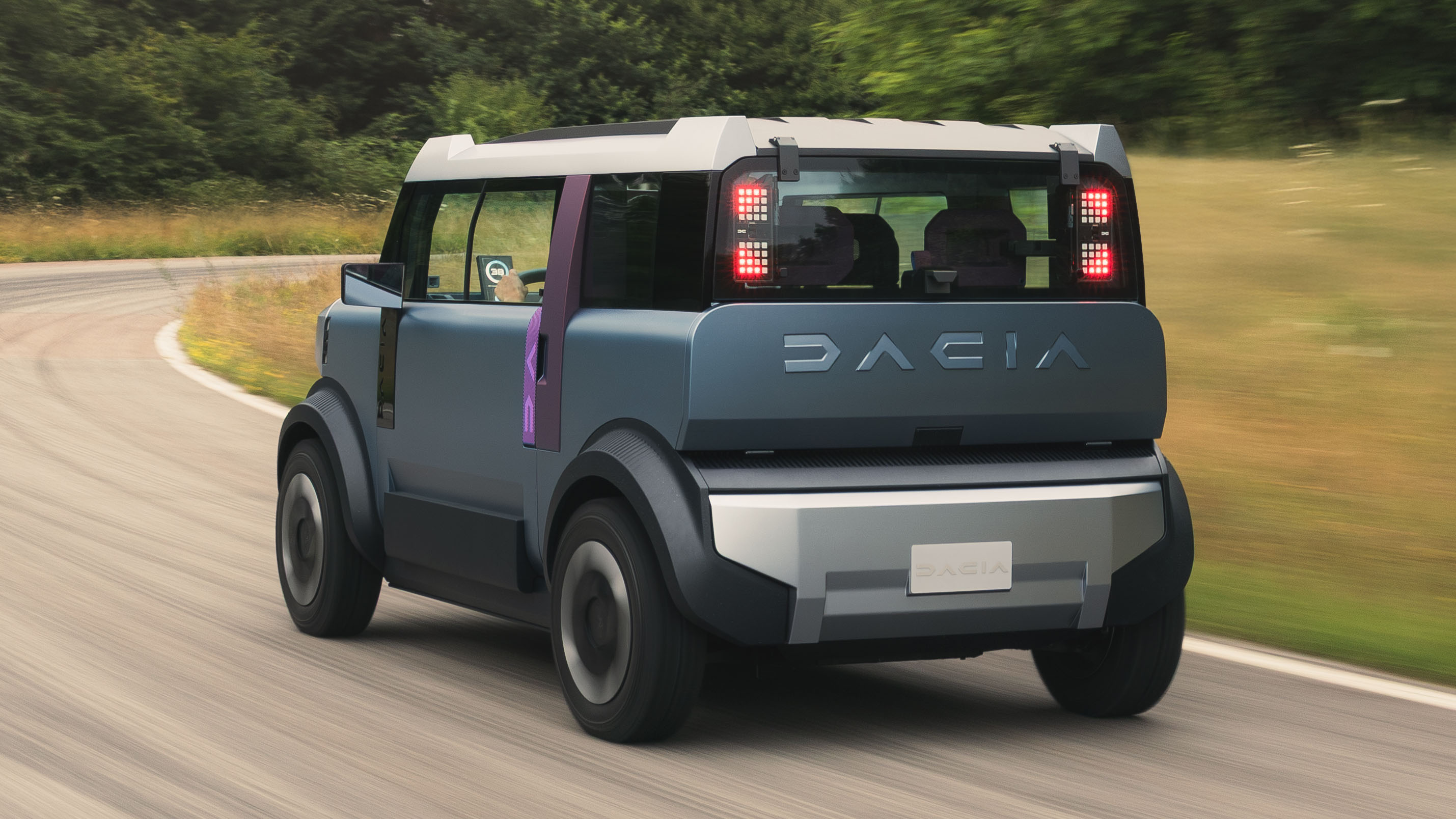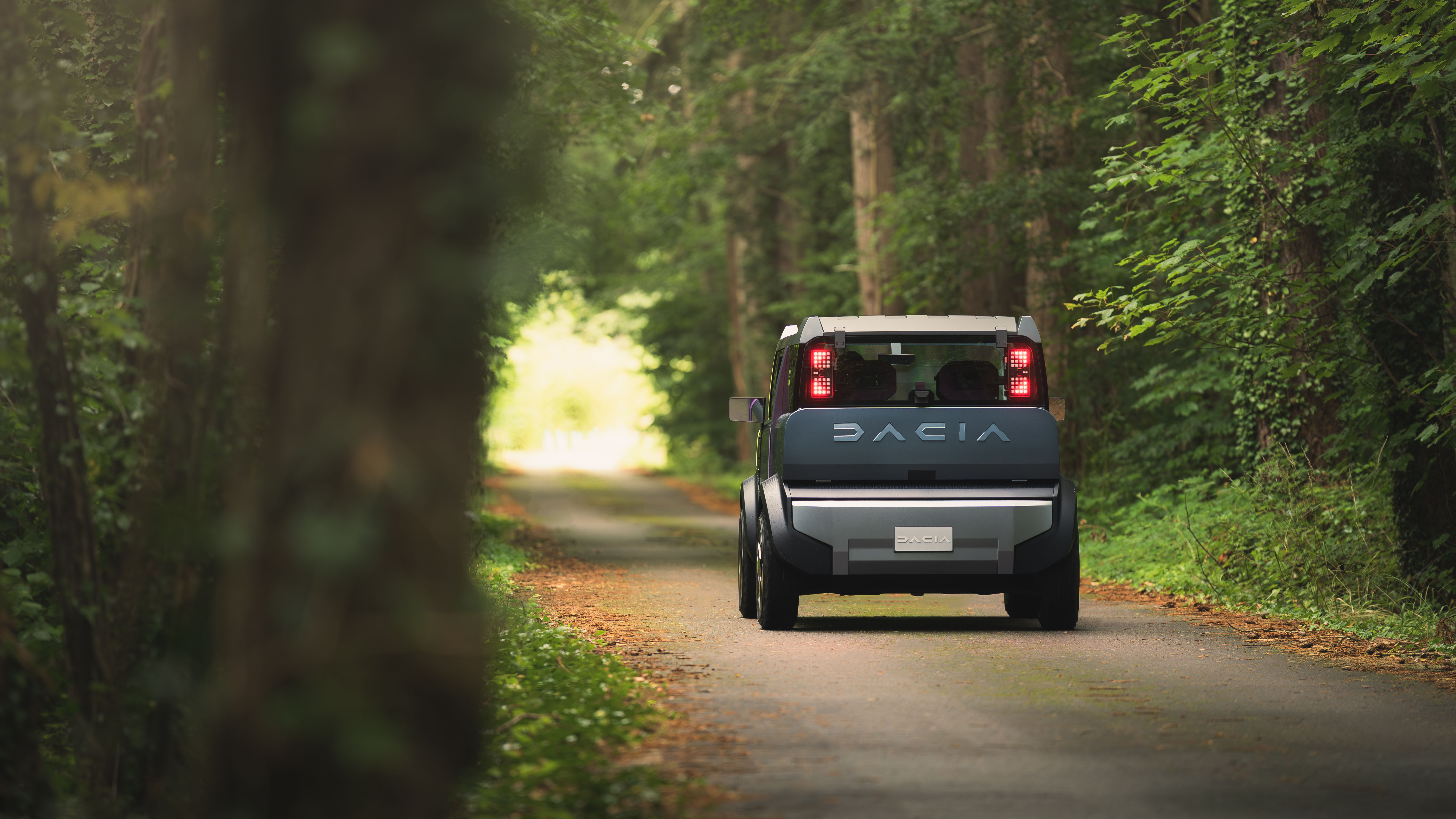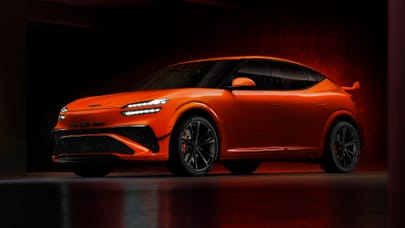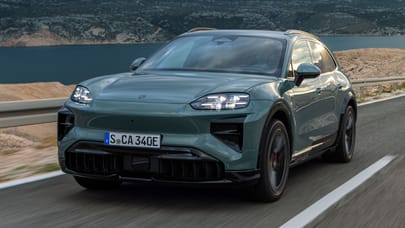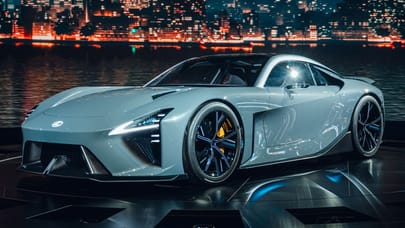
The Dacia Hipster concept is a tiny lightweight inspired by the OG Mini and Japan's kei cars
Dacia wants to bring electric mobility to the masses via this funky, not-chunky four-seater
Citroën 2CV. Fiat 500. Mini. VW Beetle. Dacia Hipster… wait, what?
Before you get too excited, the Hipster is officially still just a concept. But it’s got our attention, for all the size of it. It’s a mere 3m long and 1.5 metres wide yet there’s room for four adults inside, and the boot can swallow up to 500 litres. It’s 20 per cent lighter than Dacia’s all-electric tiddler, the Spring, and aims to halve the carbon footprint over its life cycle compared to the best EVs currently on sale.
The Hipster also acknowledges another important issue: even cheap electric cars are still too expensive to work as mass mobility solutions. Hence the allusion to those, yes, iconic ‘peoples’ cars’ up above. It’s time for another paradigm shift.
In the EV context, the solution is interesting. Dacia says the Hipster offers enough range for daily journeys and hypothetically would only need to be recharged twice a week. In France, for example, 94 per cent of motorists travel less than 24 miles per day. (In the UK, it’s just 19.) On which basis, everything can be smaller, lighter and more ‘essential’, in the true meaning of the word, though there’s no word on the Hipster’s battery pack.
In terms of the bigger picture, you could describe this little car as a mobile life hack, and it taps into the growing belief that the modern world is just too damn distracting and complicated. Fortunately for Dacia, this is a message it has been espousing for a while now.
“We’re realising that it actually takes a lot of time to do something that was quite simple before,” Dacia’s design VP David Durand tells TopGear.com. “People are re-examining what they really want and need from a car, and what they’re prepared to spend on it. Increasingly, they’re considering simplicity as a solution.”
Dacia calls its approach ‘Eco-Smart’, but it could just as easily have been called ‘Common Sense’. Guess what? Make something lighter and you need to expend less energy hauling it around. Ergo, a smaller battery will do, which also reduces the cost. And you’ll also need fewer materials to manufacture it. “It becomes a virtuous circle,” Durand confirms. “We think a range of 150km (93 miles) range is enough.”
Of course, it also helps if you design something that people will actually want. Maximising interior volume means that you very quickly end up with a cube shape, and minimising overhangs is a good idea, too. Dacia freely admits that the Hipster is basically a block on four wheels.
The tail-gate extends across the entire rear end, and opens in two parts to reveal a huge aperture for easy loading and unloading. The rear lights are located behind the tailgate glass so they don’t need a separate panel or recess. One body colour is available, and there are only three painted parts. It’s almost a flat-pack car.
“We didn’t want to do something small that’s pretending to be some other car,” Durand says. “A cube can look tough and robust. We were also inspired by Japan’s kei cars. They’re the specialists at playing with the constraints but still making something very cool. We wanted it to have personality and be recognisable but also to remain serious and trustworthy. It looks like you’re well protected. It has a high beltline, and the driving position is same as it is in the Sandero. The Hipster is small and friendly looking but it’s not a toy.”
Top Gear
Newsletter
Thank you for subscribing to our newsletter. Look out for your regular round-up of news, reviews and offers in your inbox.
Get all the latest news, reviews and exclusives, direct to your inbox.
Simplifying things, Durand says, has become almost a game Dacia’s designers play internally. "'Your proposal is super cool, but why not try it without that part in the centre…' and we replace it with a big chamfer. This is where the creativity arrives, finding good ideas without spending any more money. We want to arrive at the point where we have exactly what people need but no more.”
The Hipster’s body features a material called Starkle, a 20 per cent recycled plastic derived from old bumpers and dashboards that’s re-injected with virgin material. That’s left it peppered with white dots, an imperfection Dacia has consciously leaned into. “We could have covered those with a painted finish but wanted to leave it,” Durand says. “It’s something you see in sneakers. We’d love to use it, but it’s actually more expensive. When the economies of scale kick in, it’ll be more viable.”
The interior is basic without being monastic. Access to the front and rear is done via a large door on either side, with a fabric strap rather than a traditional handle. There are sliding windows inside and a bench seat upfront, whose lightweight structure is visible. Needless to say, there’s no electric adjustment. (Are the armchairs in your living room electrically adjustable? Exactly…)
The head-rests are minimal. There’s an airbag for the driver and passenger. Dacia’s ‘YouClip’ accessories attachment system is used inside, with provision for 11 anchor points. Cupholders, armrests and storage boxes are among the available delights.
Dacia has also devised a ‘bring your own device’ solution, with a docking station for the occupant’s smartphone. Sure, a bigger screen is helpful but in terms of connectivity this is all you really need. The phone’s audio and streaming functionality connects to a YouClip portable Bluetooth speaker. The phone also becomes the Hipster’s digital key.
“We’re not trying to reinvent the Mini. It was unique and brilliantly done,” Durand says. “It arrived in a different regulatory era. But it made people think differently and this was the real inspiration for us. The desire to create lots of space inside a vehicle that’s a small object from the outside.”
Sidebar: Durand owns a 1968 Land Rover Series II. He also owns seven motorcycles. This goes some way to explaining why he’s the right guy to oversee Dacia’s design – and why the Hipster has ended up the way it has. “A motorcycle is top when it comes to the idea of essential design,” he says. “You take an engine, add two wheels, and sit on top of it.
"OK, it’s not about comfort and you’re often in the middle of the elements, getting too cold or too hot. I understand it’s too extreme for most people. But in other ways it’s about absolute freedom."




